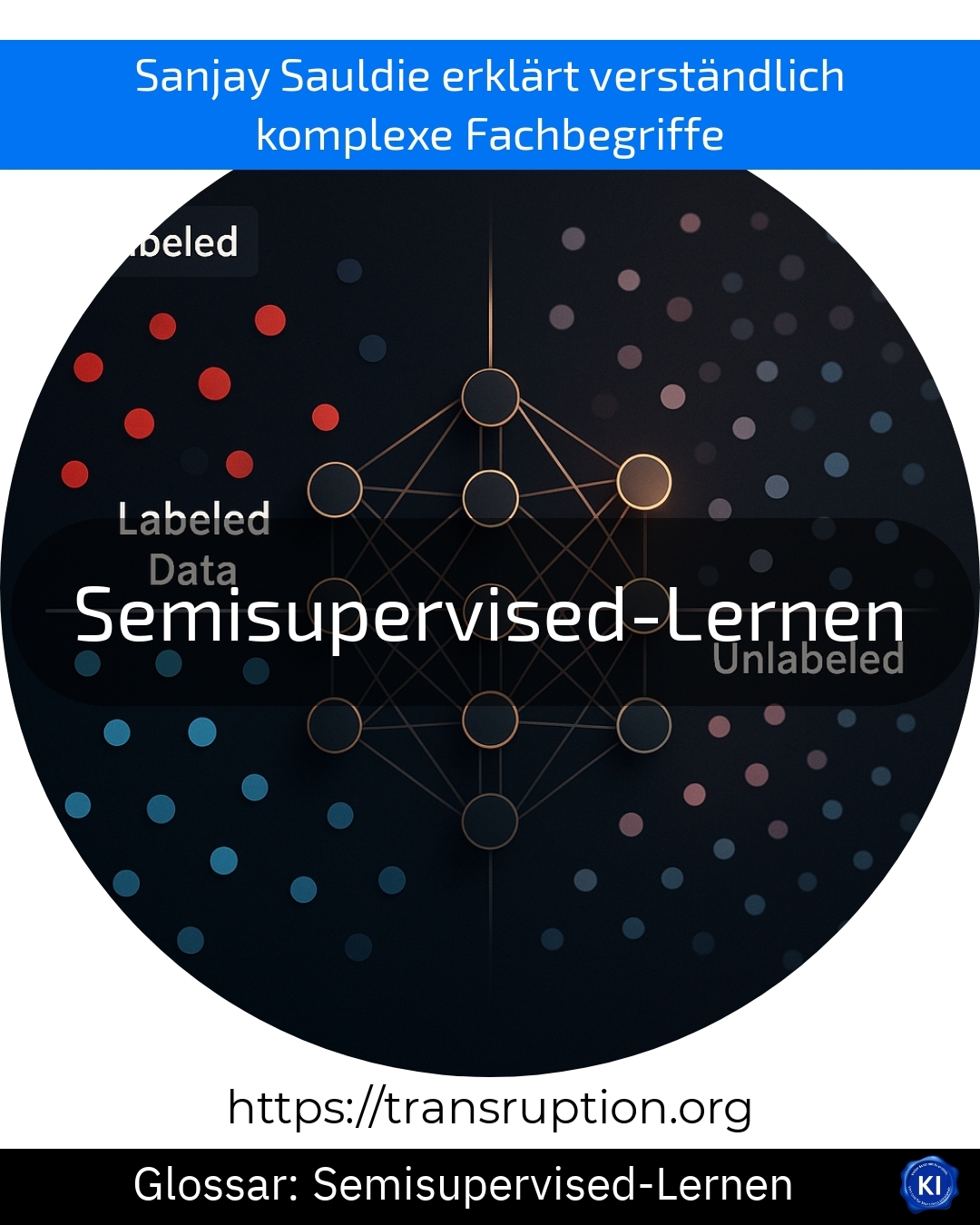Semi-supervised learning is a term used in the fields of artificial intelligence, big data, smart data and digital transformation. This method always comes into play when computers are trained with data, for example to recognise images or automatically understand texts.
The special thing about semi-supervised learning is that the computer can not only access "guided" data, i.e. data with clear answers, but also a lot of data without answers. This means that a small part of the data is labelled (with correct results), but the rest is not. The advantage of this is that artificial intelligence can learn even if there is not an answer for every image or piece of information.
Imagine you want to teach a computer to recognise cats in photos. You have 100 photos where you know whether a cat is pictured or not - and thousands more where you don't know. Semi-supervised learning ensures that the computer can work with both types of data. This saves time and effort, as the time-consuming "labelling" of the data is only partially necessary.
In short, semi-supervised learning often makes artificial intelligence more efficient and cheaper, especially when a lot of unlabelled data is available.















